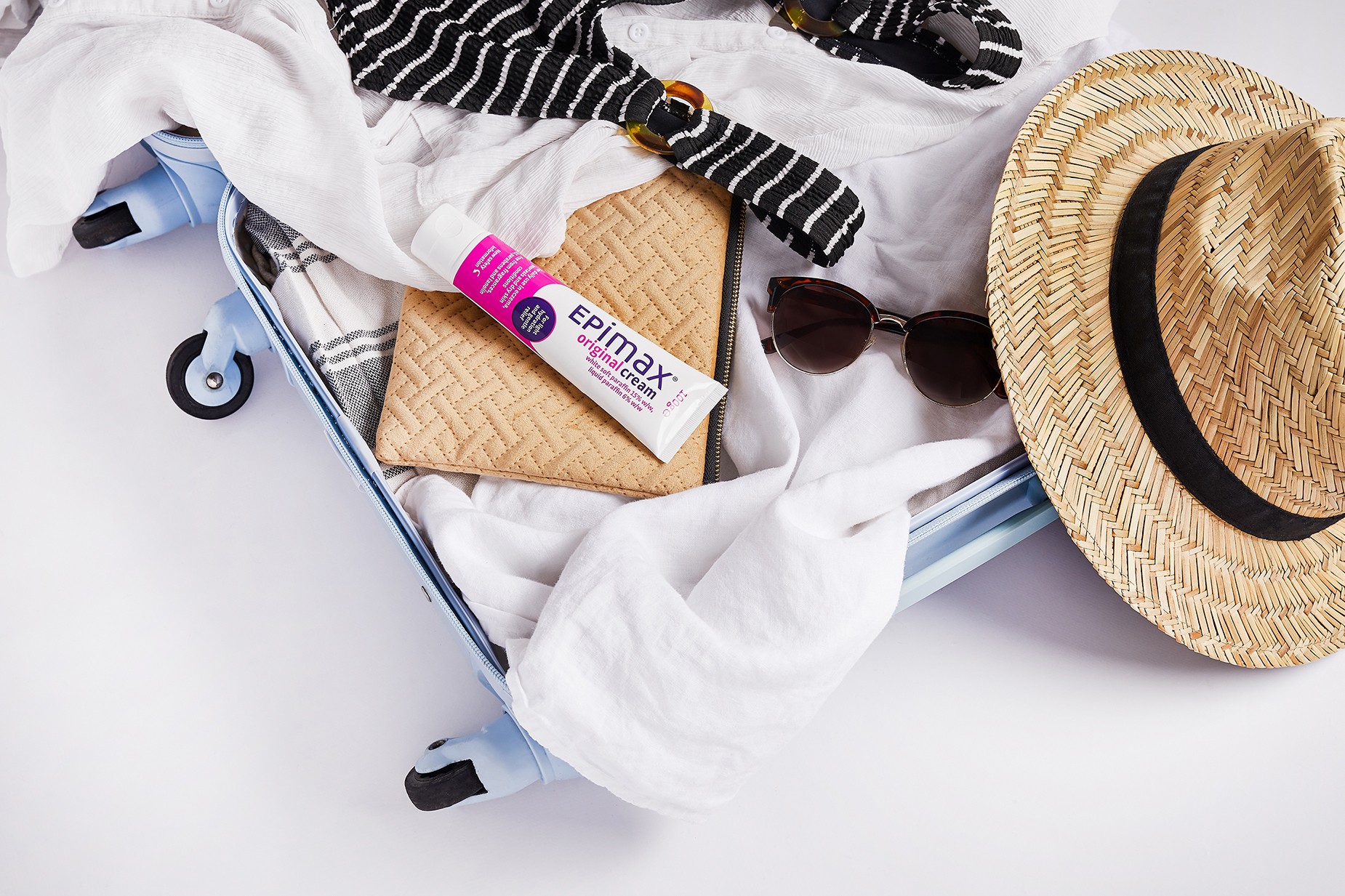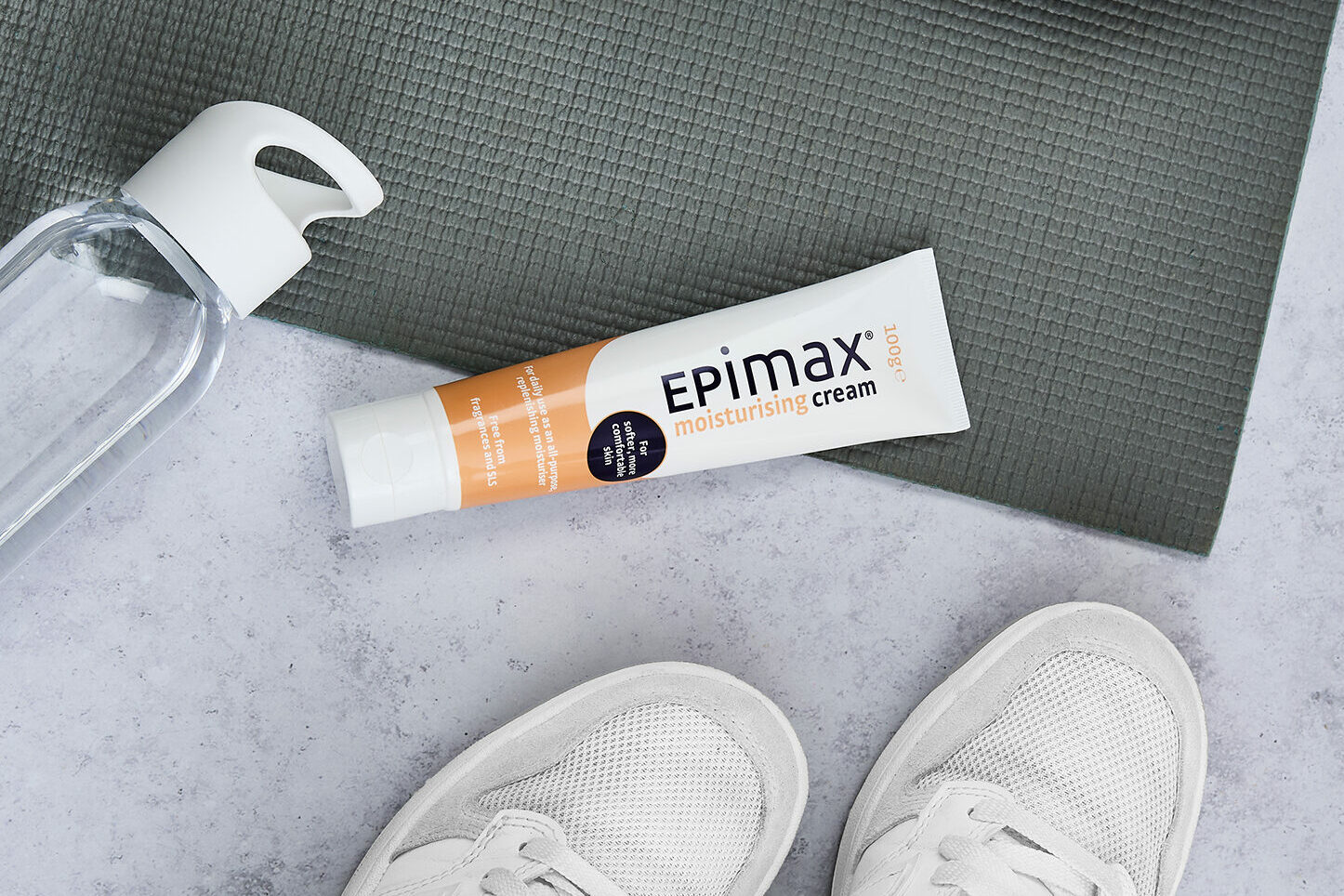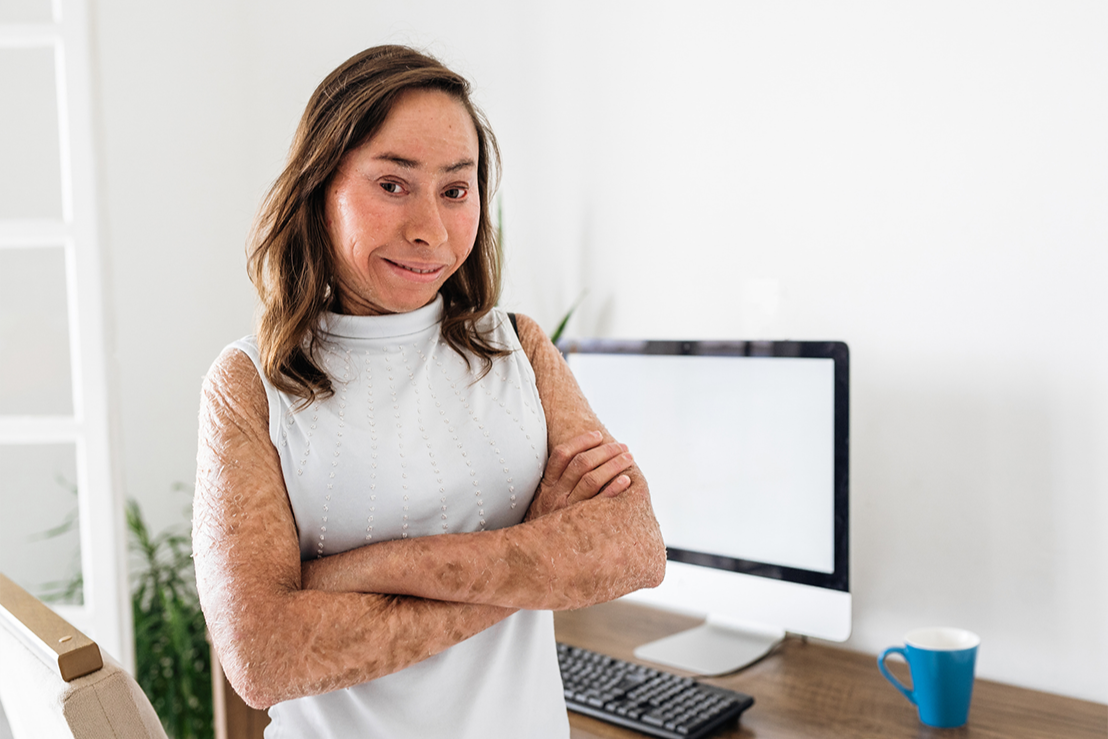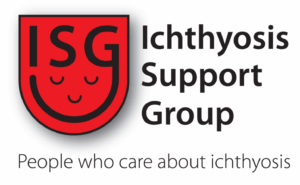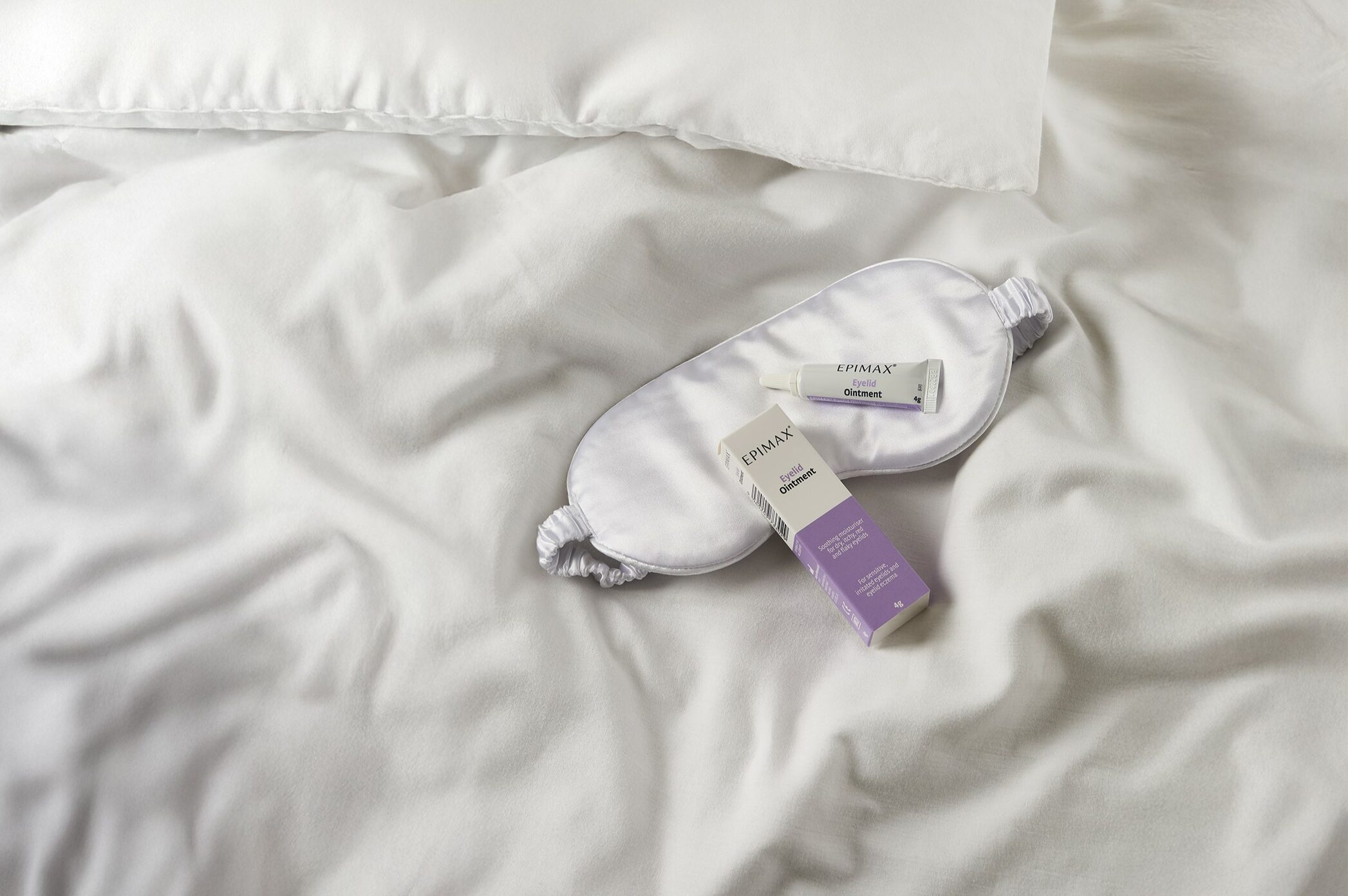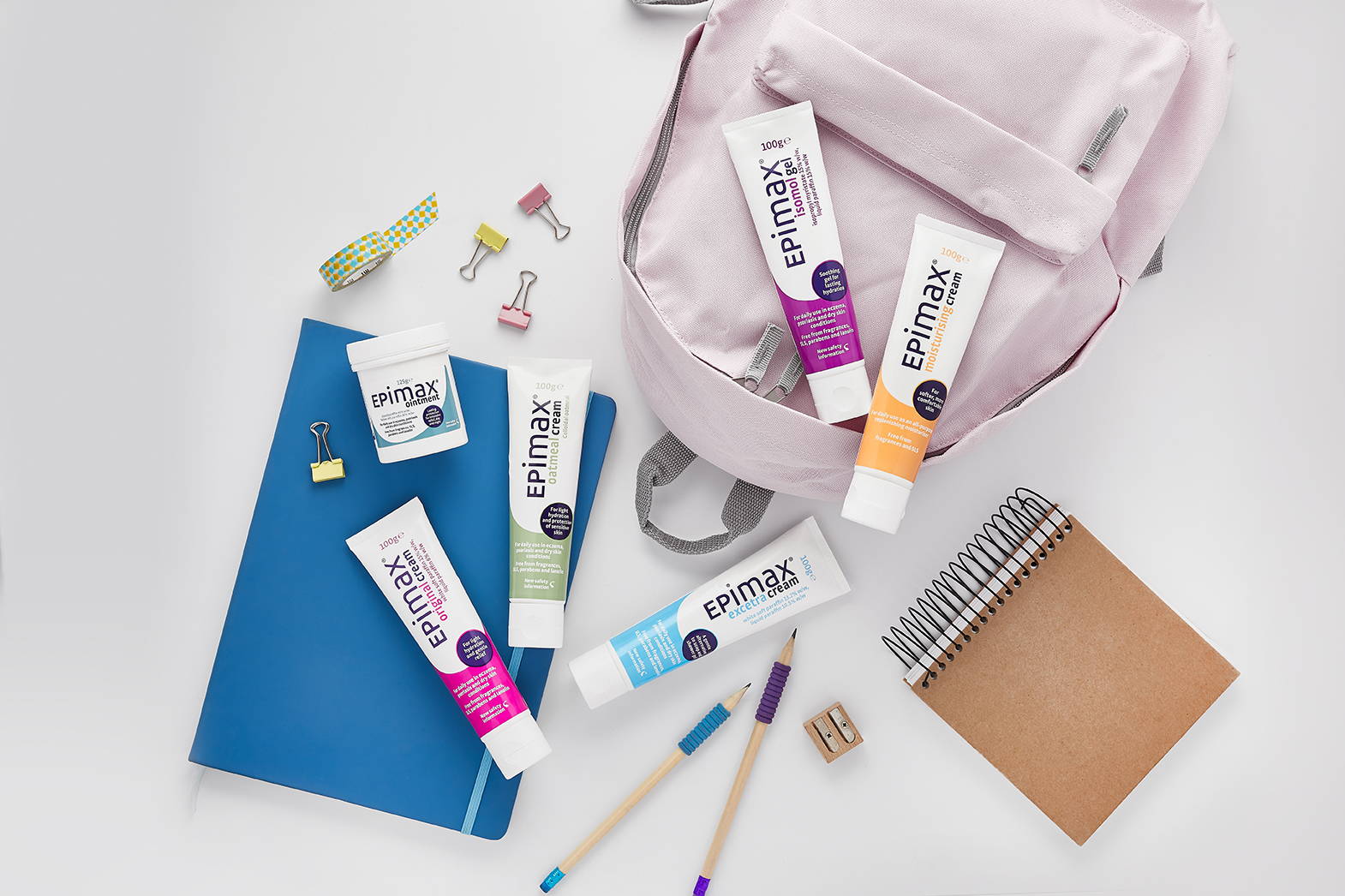Wellbeing Tips Tailored to Suit Your Skin!
Wellbeing is the state of being comfortable, healthy, and happy. Your state of wellbeing can be disrupted, or balanced, by many factors. Often, we are encouraged to introduce new behaviours and practices into our lives, without the consideration of their impact on skin health!
To mark ‘World Wellbeing Week’, we’ll be taking some common suggestions for improving your wellbeing and tailoring them to be more skin-friendly.
Exercise without aggravating your skin
Exercise is one of the best ways to look after our physical health and mental wellbeing, providing benefits such as increased self-confidence and lower stress and anxiety levels.1 However, for people with dry skin conditions, enjoying exercise is sometimes more of a challenge due to skin irritation, flare-ups and discomfort. So, what can you do to help keep your skin happy during and after workouts?
One of the biggest causes of skin irritation from exercise is sweating. Sweat mostly consists of water and salt, so when it evaporates, it can dry out your skin and cause irritation.2 To help avoid excess sweating, try to find a cool environment to work-out in, whether that be in a well-ventilated indoor space or outside during the morning or evening (when the temperature is lower): this will help prevent skin becoming too hot and irritated. 2
For additional relief from skin irritation, make sure to steer clear of tight-fitting gym gear, and instead wear looser cotton fabrics as they are more breathable.3 Make sure to wash your clothing after any exercise to clean away any irritants and bacteria before its next wear.
When choosing your exercise routine, make sure to consider your skin’s needs. During flare-ups, it’s best to avoid intense activities to prevent worsening skin symptoms.4 Listen to your body and choose exercises you feel won’t aggravate your condition.
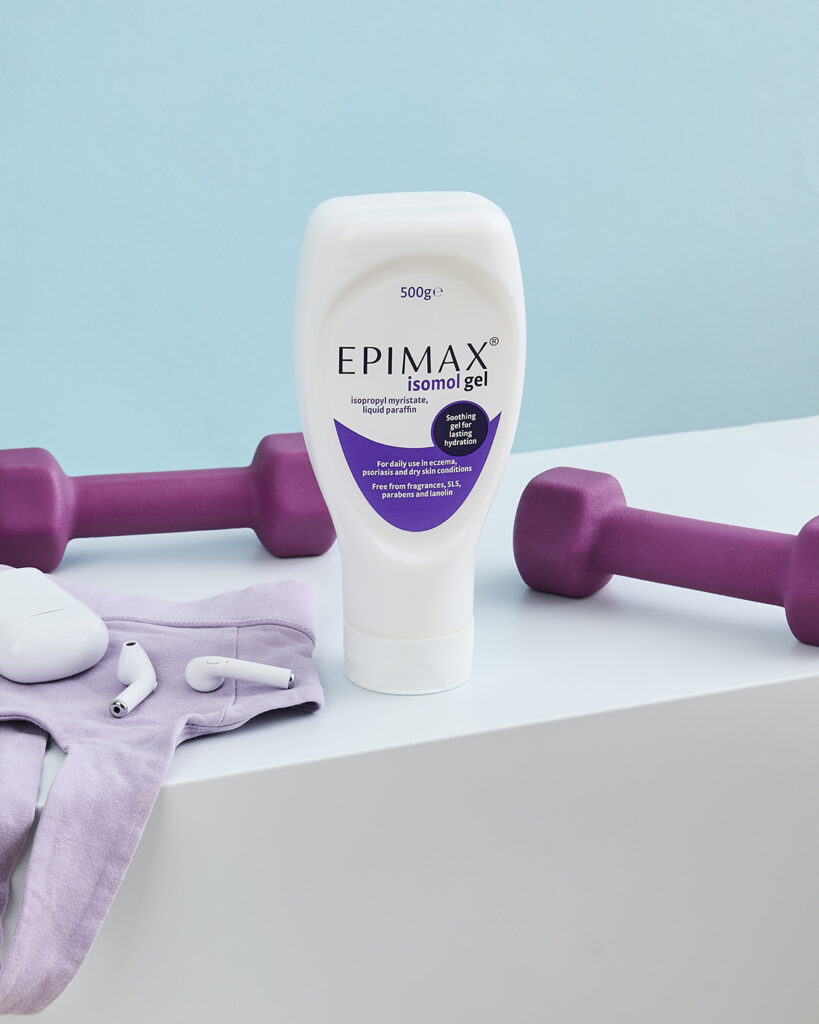
Tips for spending time in the great outdoors!
Both hot and cold weather bring unique challenges for your skin but spending time outdoors and within nature can be brilliant for your mental and physical wellbeing!
Some people find that their eczema improves with exposure to sunlight, while others experience a worsening of their condition.5 Despite this, when preparing to spend time in the sun, everyone should remember to wear SPF! If you’re using an emollient, apply it 30 minutes before applying sunscreen.6 Finding shade outdoors will help you keep cool and help avoid damaging your skin.
When spending time outdoors in the cooler months, you also need to protect your skin. Protect sensitive areas like the face and hands by applying emollients regularly and avoiding lip-licking, which worsens dryness.6 Additionally, chose cold weather clothing items made of natural fabrics such as cotton and bamboo to prevent skin irritation.6 For tips on managing your skin in cold weather, read our ‘Dry skin in Winter’ blog post.
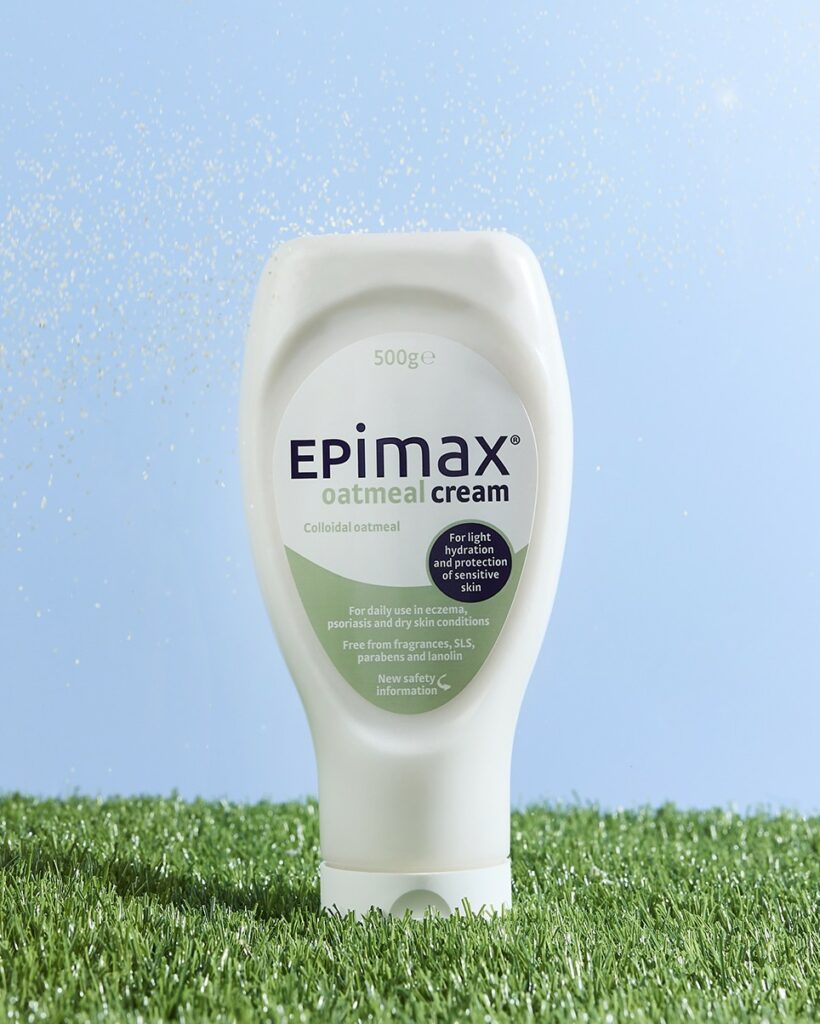
The workplace and wellbeing
Since many adults spend a large proportion of their time in work, it’s no surprise that the workplace can have a big impact on your health and wellbeing.7 Working environments expose people to certain skin triggers, such as stress, temperature and fragrances.8
Feeling itchy at work can be really distracting and uncomfortable: to help tackle this, try reapplying emollients throughout the day and if there is flexibility, opt to sit in a cooler part of the workplace (away from radiators and direct sunlight).8 If the itch is uncontrollable, take a break and try to distract yourself.8,9
If you can and feel comfortable enough to, it may good idea to disclose your skin condition to your employer. This means that you can begin to discuss adjustments to help you feel more comfortable at work.
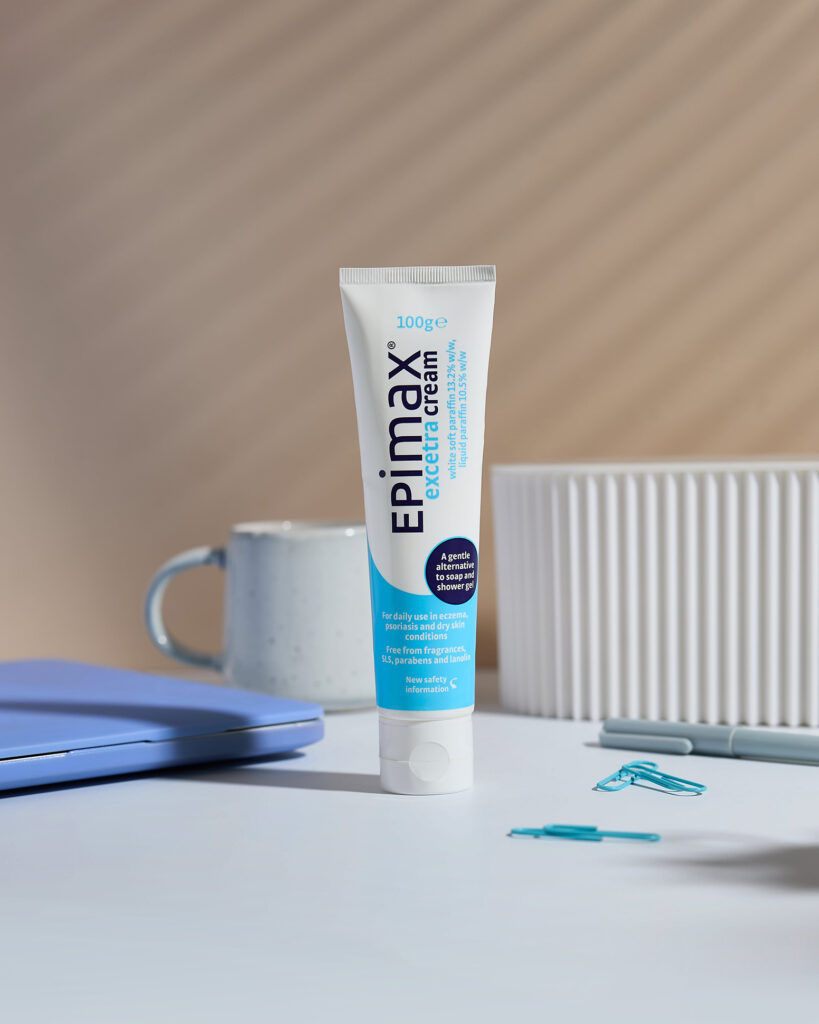
Achieving a good night’s sleep
It is often said that getting good quality sleep is crucial for maintaining wellbeing, however, this is not always easy to achieve. The discomfort and itchiness associated with dry skin conditions can lead to disrupted sleep, significantly affecting quality of rest.
During the night, your skin loses more moisture than it does during the day, leading to increased dryness and itchiness.10 Additionally, the ‘itch sensation’ may feel more intense as there are less distractions while you are trying to sleep than during the day.11
To help break the Itch-scratch cycle during the night, why not try practicing mindfulness, meditation or breathing exercises to help redirect your focus and attention.11
For tips on how to create a healthy sleep space, read our blog: ‘Skin-Friendly Tips for Better Rest’.
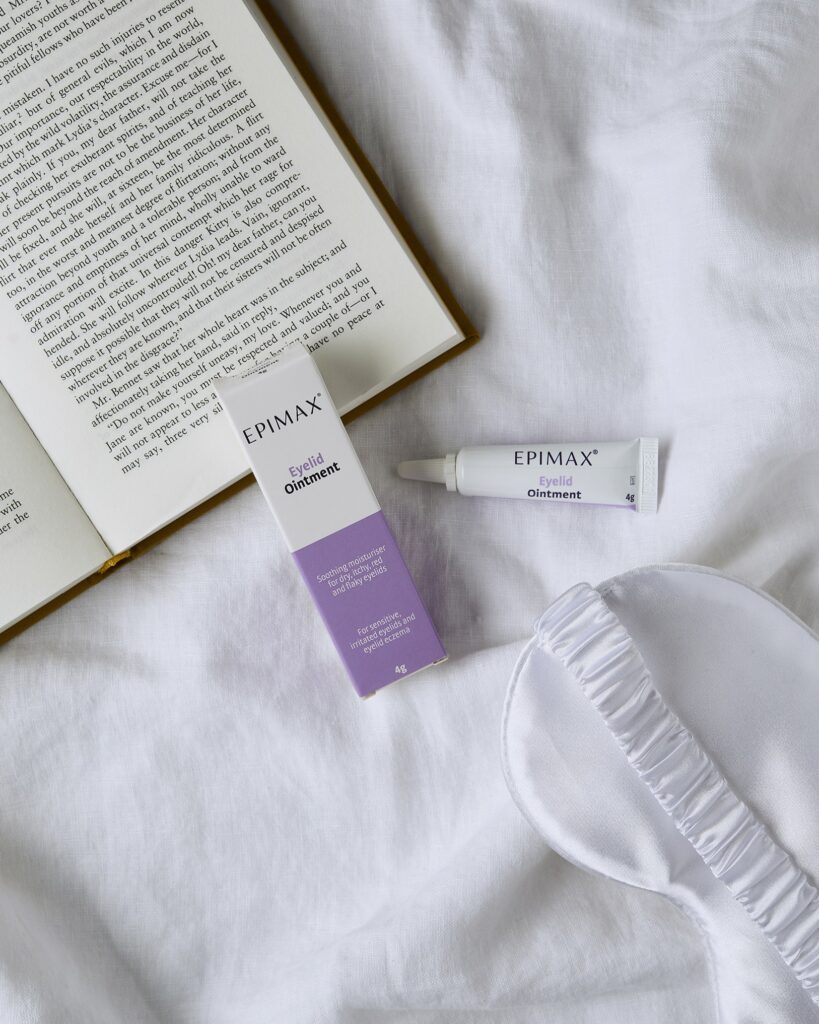
- Myers, J. (2003) “Cardiology patient pages. Exercise and cardiovascular health,” Circulation (New York, N.Y.)
- https://allergyasthmanetwork.org/news/eczema-and-exercise/ (Accessed June 2025)
- https://nationaleczema.org/blog/eczema-exercise/ (Accessed June 2025)
- https://nationaleczema.org/blog/exercising-eczema/ (Accessed June 2025)
- https://eczema.org/information-and-advice/triggers-for-eczema/sun-and-eczema/ (Accessed June 2025)
- https://eczema.org/information-and-advice/triggers-for-eczema/weather-and-eczema/ (Accessed June 2025)
- https://www.gov.uk/government/publications/health-matters-health-and-work/health-matters-health-and-work (Accessed June 2025)
- https://eczema.org/information-and-advice/living-with-eczema/eczema-at-work/ (Accessed June 2025)
- https://www.newcastle-hospitals.nhs.uk/services/dermatology/patient-dermatology-information-leaflets/practical-tips-for-scratching/ (Accessed June 2025)
- https://www.healthline.com/health/itchy-skin-at-night (Accessed June 2025)
- https://www.psoriasis-association.org.uk/news/psoriasis-and-sleep-question-answer (Accessed June 2025)
EPI1010451HHH1_JUN2025
Ichthyosis Support Hub
What is Ichthyosis?
Ichthyosis is a group of rare genetic skin conditions that cause dry, scaly skin.1 Most forms are inherited genetically, with symptoms appearing at birth, or shortly after.1,2 There are at least 20 different types of ichthyosis, each with different levels of severity and prevelance.1
The main symptoms of ichthyosis are very dry, scaly, flaky, thick and rough skin.1 While ichthyosis can’t be cured, treatments can help reduce the scaling and improve comfort for people living with the condition.1, 2
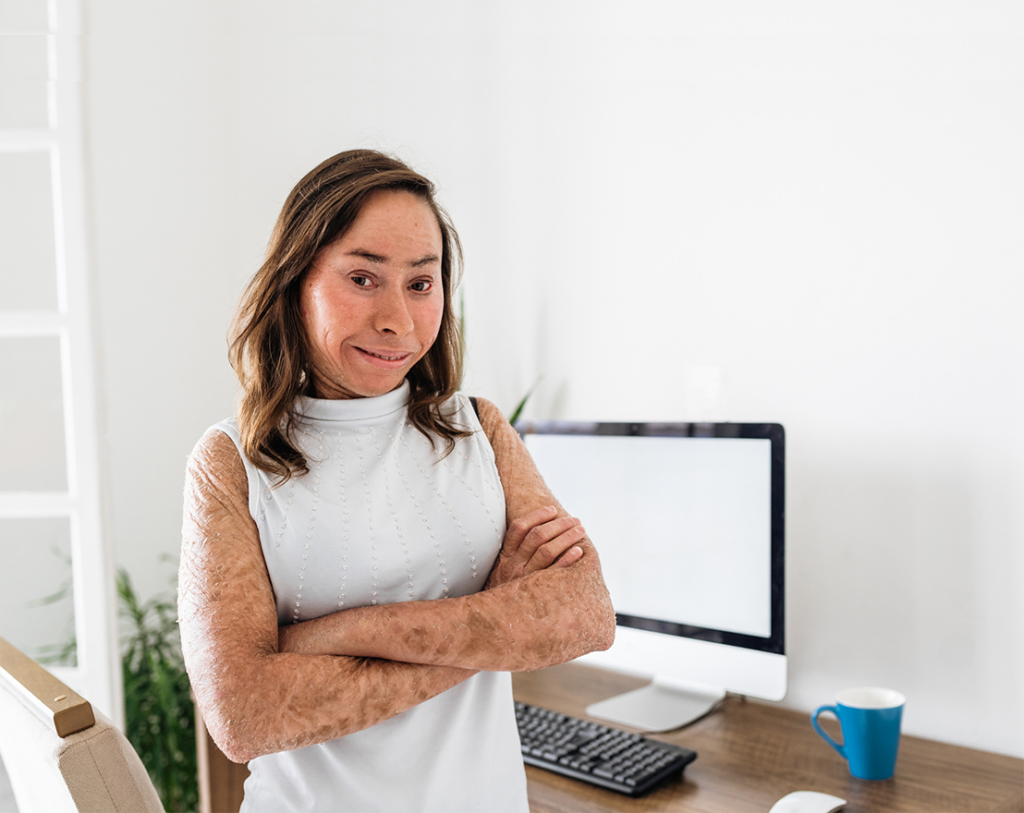
Some of the types of ichthyosis are:
Ichthyosis Vulgaris
Ichthyosis Vulgaris is the most common form of inherited ichthyosis (affecting 1 in every 250 births), it’s usually mild and can get better as you get older.1,3 Ichthyosis Vulgaris can also appear or occur later in life due to factors such as other medical conditions.1,2 It is characterised by fine, white to grey scales on the abdomen, arms and legs, whereas the face, elbows, armpits and knee creases usually remain unaffected.3
X-linked Ichthyosis
X-linked Ichthyosis predominantly affects males, and occurs in roughly 1 in 6,000 births.1,3 Some newborns may present with scaly skin, followed by the development of fine scales on the torso and limbs during infancy.3 The condition can vary in severity and tends to improve in warmer weather and as the person grows older.3
Autosomal Recessive Congenital Ichthyoses
There are three main types of ichthyoses in this group: Congenital Ichthyosiform Erythroderma, Lamellar Ichthyosis and Harlequin Ichthyosis.3 These conditions tend to have more severe symptoms and are rarer.1,3
For more information, please see the British Skin Foundation website.
Epidermolytic Ichthyosis
Epidermolytic Ichthyosis is a rare inherited ichthyosis. At birth, the baby’s skin is very fragile and may blister easily, sometimes needing intensive care.4 Over time, the skin becomes thickened, red or dark, especially in creases, and infections are common.4
Syndromic Ichthyoses
Syndromic ichthyoses are very rare inherited conditions that cause scaly skin along with symptoms in other parts of the body.5 Unlike non-syndromic types, which only affect the skin, syndromic ichthyoses involve multiple organ systems.5
Misconceptions about Ichthyosis
Sadly, people living with ichthyosis often face societal misconceptions about their condition, which can damage their self-confidence and opportunities. It’s crucial to raise awareness about the condition to create a more inclusive and supportive environment for everyone.
See some of the common misconceptions busted below:
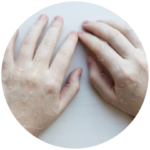
Myth: “Ichthyosis is contagious”
Fact: Many people mistakenly believe that ichthyosis is contagious or caused by an infection. However, ichthyosis is actually a genetic condition and cannot be spread from person to person.

Myth: “Ichthyosis is due to poor hygiene”
Fact: Ichthyosis isn’t caused by poor hygiene! It’s a genetic condition caused by mutations affecting skin cell turnover and barrier formation. Proper skincare is crucial for management of the condition, but hygiene isn’t the culprit.

Myth: “All cases of ichthyosis are severe”
Fact: Some types of ichthyosis, like Harlequin Ichthyosis, are very severe, while others, such as ichthyosis vulgaris, are milder and more manageable. Public perception often highlights the rare, striking cases, overshadowing the more common, less severe forms.

Myth: “Life can’t be normal with ichthyosis”
Fact: Many people assume that individuals with ichthyosis are severely impaired or cannot lead fulfilling lives. In reality, many people with ichthyosis lead active, productive lives when they have access to the right treatment and support.
What can help manage the condition?
Most types of ichthyoses cannot be cured, but there are many methods to help manage the symptoms!
- Frequently use emollients like creams, lotions, or ointments to trap moisture and relieve dryness and scaling.1
- Ideally use emollients when your skin is still wet after having a bath or shower.6
- Opt for fragrance-free, soap-free cleansers that do not strip the skin of its natural oils when washing.7
What makes Ichthyosis different to Eczema and Psoriasis?
The scaling associated with ichthyosis typically affects most, if not all, areas of the skin and remains fairly consistent over the years.8 This contrasts with skin conditions, such as eczema and psoriasis, where scaling is limited to specific areas and frequently changes its pattern.8 Notably, up to 50% of individuals with ichthyosis vulgaris also have features of atopic eczema, highlighting the overlap between these skin conditions.9
Where can you look for further information?
For more tips on managing ichthyosis, have a look at the Ichthyosis Support Group. They have lots of useful resources on their social media pages and website about specific ichthyosis conditions.
- https://www.nhs.uk/conditions/ichthyosis/ (Accessed May 2025)
- https://www.webmd.com/skin-problems-and-treatments/what-is-ichthyosis (Accessed May 2025)
- https://knowyourskin.britishskinfoundation.org.uk/condition/ichthyosis/ (Accessed May 2025)
- https://cdn.bad.org.uk/uploads/2021/12/19173955/Ichthyosis-PIL-Aug-2023.pdf (Accessed May 2025)
- https://pmc.ncbi.nlm.nih.gov/articles/PMC10842576/ (Accessed May 2025)
- https://www.bad.org.uk/pils/ichthyosis/ (Accessed May 2025)
- https://www.ichthyosis.org.uk/winter-skin-care-tips (Accessed May 2025)
- https://sussexcds.co.uk/patient-information/ichthyosis/ (Accessed May 2025)
- https://www.pcds.org.uk/clinical-guidance/ichthyosis (Accessed May 2025)
EPI1010451GGG1_MAY2025
Navigating Menopause Skin Changes with Confidence
Our 2024 research with National Eczema Society highlights the importance of providing more support for women facing skin changes during menopause. For more detailed statistics and findings from our menopause research, please click here.
This blog aims to explain what menopause is, how it affects the skin, and provide tips to manage skin impacts effectively.
Understanding menopause
Menopause is a natural stage in life where periods stop due to the ovaries producing less of a hormone called oestrogen.1,2 Usually, the menopause affects women between 45 and 55 but it can happen at any age.3
Skin changes during menopause
There are many physical and psychological effects of menopause, among which skin changes are quite common.4 During menopause, oestrogen levels, which stimulate the formation of skin-smoothing collagen and oils, begin to decline. As a result, the skin’s ability to retain moisture diminishes, leading to increased dryness and itchiness.5

Tips for Managing Menopausal Skin
We understand that changes to skin health can be frustrating, so we have teamed up with Dermatology Nurse Consultant, Paula Oliver, who has over 30 years’ experience in dry and sensitive skin, to share her tips on managing menopausal skin:
1. Moisturise Regularly
Hormonal changes can significantly reduce skin hydration, so moisturising twice daily with rich, fragrance-free products can help replenish the skin barrier.
2. Stay Hydrated
Drink plenty of water throughout the day to support skin hydration from within, especially if you’re experiencing dry, flaky skin.
3. Use Gentle Cleansers
Choose gentle, non-foaming cleansers (with low pH) or use an emollient as a soap substitute to maintain skin’s natural oils, which are often stripped away by more aggressive products.
4. Avoid Triggers
Some women find that environmental factors, such as fragrances and wool or synthetic fabrics next to the skin, can worsen their skin condition, so it can be helpful to identify and avoid triggers.
5. Seek Healthcare Professional Advice if Needed
First seek assessment and advice from your GP practice and, if your symptoms are persistent or severe, ask for a referral to a dermatologist, who can offer targeted relief and specialised treatment options.
- https://www.webmd.com/beauty/features/menopause-dry-skin-hormone-connection (Accessed March 2025)
- https://www.nhsinform.scot/healthy-living/womens-health/later-years-around-50-years-and-over/menopause-and-post-menopause-health/menopause/ (Accessed March 2025)
- https://www.nhs.uk/conditions/menopause/ (Accessed March 2025)
- https://www.nhs.uk/conditions/menopause/symptoms/ (Accessed March 2025)
- https://www.healthline.com/health/beauty-skin-care/menopause-skin-changes#how-skin-changes (Accessed March 2025)
EPI1010451DDD1_MAR2025
Menopause and Eczema: Impacts and Insights
New research by EPIMAX® and National Eczema Society has revealed the often-hidden impact of menopause on skin health, with many women encountering unexpected issues like dry skin and eczema as they undergo hormonal changes.
The survey involving over 700 women across the UK who suffer from eczema and dry skin revealed some striking statistics:
25%
of women experienced eczema for the first time during menopause.
32%
suffer from dry skin or eczema on their face.
28%
knew that menopause could impact their skin health.
91%
believe that hormonal changes triggered their dry skin and eczema.
Impact on Daily Lives
The survey also revealed that 85% of respondents felt that their eczema and dry skin impacted their lives, affecting their confidence, relationships, hobbies, and social interactions. The data shows that these issues leave many women feeling:
73%
Self-conscious
43%
Sad
47%
Stressed
34%
Fatigued
Unexpected Financial Costs
In an effort to manage menopause symptoms, 10% of women are spending an average of £500 per year on skincare and treatments tailored for dry skin and eczema. This underlines the financial cost of menopause-related skin issues as they search for effective solutions.
The Need for Increased Support
87% of women wish they had known more about the connection between menopause and skin health before experiencing it firsthand. Over 90% of respondents stated that there isn’t enough information available for those suffering from eczema or dry skin during menopause.
Paula Oliver, Dermatology Nurse Consultant for EPIMAX®, emphasizes the importance of empowerment through information: “Women need to be empowered with the right information and resources to manage these skin changes. Seeking advice from healthcare professionals who understand the specific needs of menopausal women can make a significant difference in managing symptoms. The research highlights the often-overlooked toll that menopause can take on skin health. Dry skin and eczema during menopause can have real impacts on daily life and emotional well-being, yet so many women remain in the dark about what’s happening to their skin until they experience it first-hand. Greater awareness is key, as is making sure that women have access to effective products and resources to help them manage these changes.”
Keisha Sayers, Campaigns Lead at National Eczema Society, adds: “Many women are taken by surprise by the effects of menopause on their skin, with symptoms like dryness and eczema often arriving unexpectedly. Along with the physical discomfort, these conditions can have a real emotional and social impact, leaving women feeling isolated and frustrated. At National Eczema Society, we want women to know that they’re not alone and that there is support available. Our advice to those experiencing menopausal skin changes is to stay informed and take extra care with your skin. We encourage anyone who is struggling with eczema to reach out to us and look at the resources, community support, and practical tips for managing these symptoms available on our website www.eczema.org. The survey also highlights the urgent need for more research to better understand the impact of hormonal changes on eczema and the skin, and ways to better support women.”
So, where can you look for support for menopause-related skin concerns?
- Your GP: Seek assessment and advice from your GP practice. For persistent or severe symptoms, you can request a referral to a dermatologist for targeted relief and specialised treatment options.
- National Eczema Society: As highlighted by Keisha, the National Eczema Society is a valuable resource and encourages anyone struggling with eczema to reach out and explore the resources, community support, and practical tips available on their website www.eczema.org.
- For tips on managing menopausal skin, please see our blog post ‘Navigating menopause skin changes with confidence’ featuring advice from Dermatology Nurse Consultant Paula Oliver.
These findings from the ‘Menopause and Eczema: Impacts and Insights’ survey highlight the urgent need to find ways to better support women who are facing the physical effects of menopause. More help and support are crucial for empowering women to navigate these skin health challenges.
[All statistics are from a survey of 710 respondents who are experiencing menopause and suffering with eczema or dry skin conducted by EPIMAX® and National Eczema Society in October 2024]
EPI1010451EEE1_MAR2025
Skin-Friendly Tips for Better Rest
For people living with dry skin conditions like eczema and psoriasis, getting a good night’s sleep can be difficult. The discomfort and itchiness that often comes with these conditions can lead to disrupted sleep, significantly affecting quality of rest and overall wellbeing.
It’s widely understood that sleep is essential for helping maintain our health, so what can you do to help improve yours?
Why you might feel itchier at night:
During the night, your skin loses more moisture than it does during the day, leading to increased dryness and itchiness.1 Additionally, the ‘itch sensation’ may feel more intense as there are less distractions while you are trying to sleep than during the day.2
To help break the itch-cycle during the night, why not try practicing mindfulness, meditation or breathing exercises to help redirect your focus and attention.2
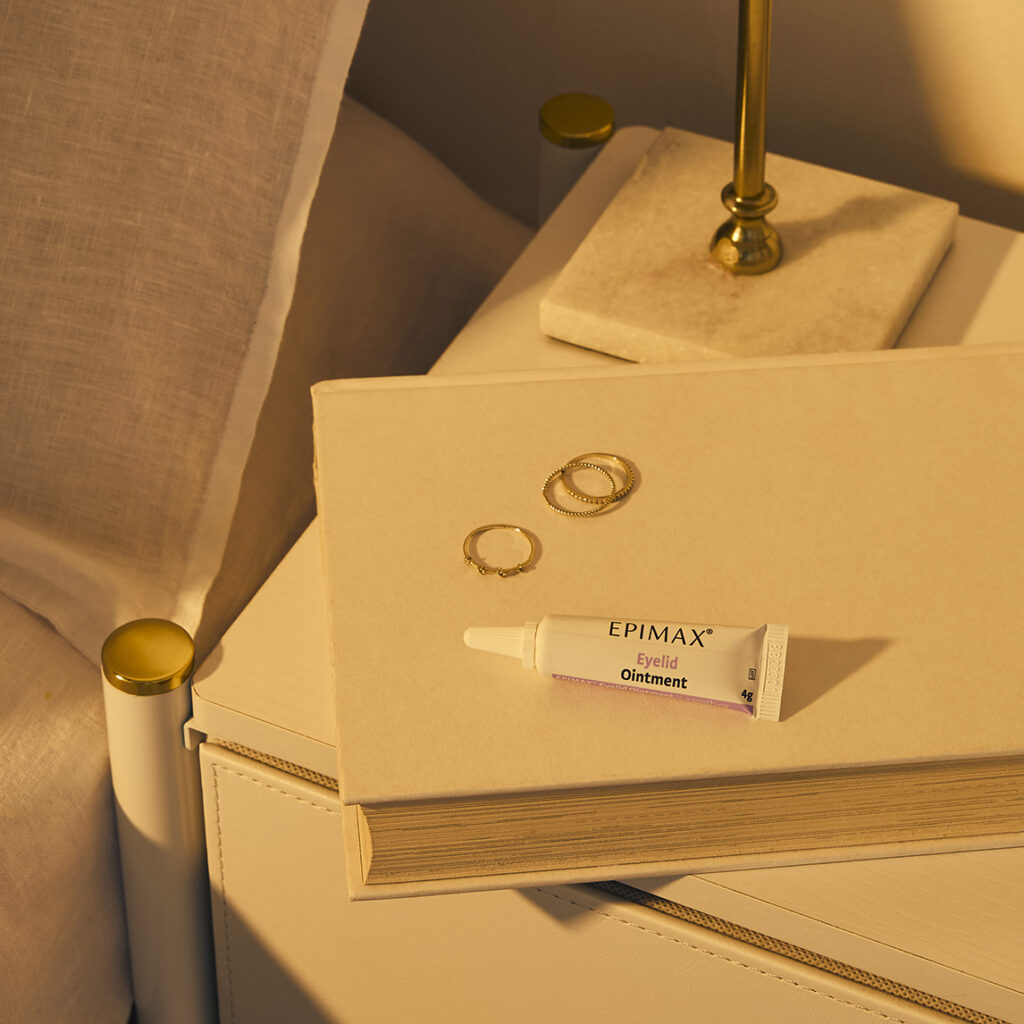
Did you know we spend over a third of our lifetime in bed?
It’s essential to create a skin-friendly environment in your bedroom.3
Here’s how you can optimise your bedroom setup:
- Choose a lower tog duvet (between 1.5 and 4.5 tog) to help you keep cool overnight.4 In colder months perhaps use two thinner duvets so one can be removed if you are getting too hot in the night. If you and your partner have different sleeping temperature preferences, consider using separate duvets.5
- Some people find that feather filling in pillows and duvets can trigger flare-ups, so instead, look for synthetic bedding that is non-allergenic.6
- Avoid using a memory foam mattress as it traps heat in your bed by moulding around the shape of your body.4,5
- Try not to keep lots of soft furnishings on your bed and in your bedroom as they can harbour dust. Some people with eczema find it helpful to swap carpets for hard flooring and curtains for wooden or metal blinds, as they are easier to keep clean.5
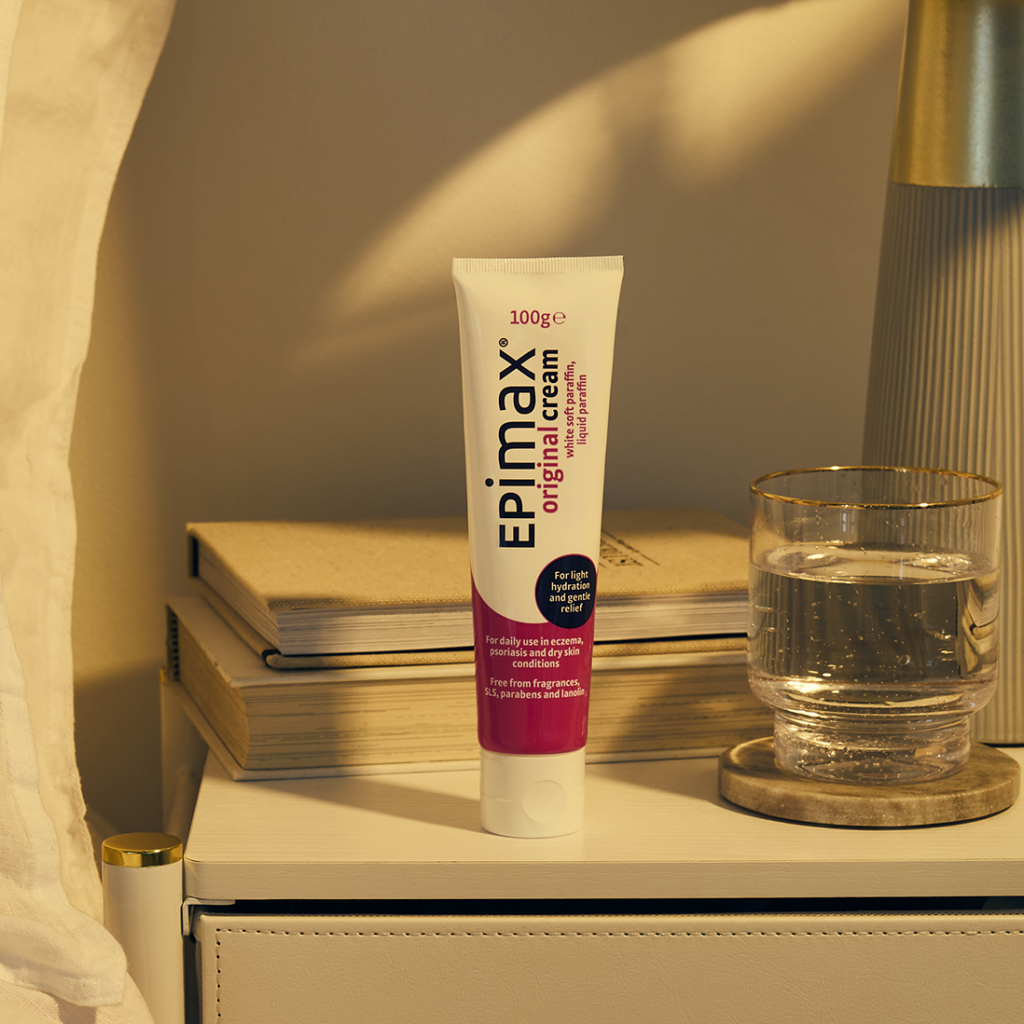
Maintaining a Healthy Sleep Space:
- Clean your bedroom frequently and damp-dust (using a lightly dampened cloth or sponge) to remove dust, pollen, and mould. Air your room out with fresh air during the day, unless there’s a high pollen count.5
- Wash bedding regularly (if possible, at least twice a week) to remove dust and other allergens, as well as any emollient or treatment residue that could be deposited on and trapped in your sheets5
- Vacuum your mattress thoroughly each time you change your bedding to keep it clean and remove dust.5, 6
- Opt for natural, breathable fabrics for your sleepwear, such as cotton, bamboo, or silk. Cotton is a popular choice for both nightwear and bedding because it can be washed at high temperatures to remove skin debris, house dust-mite droppings and emollient residue.5
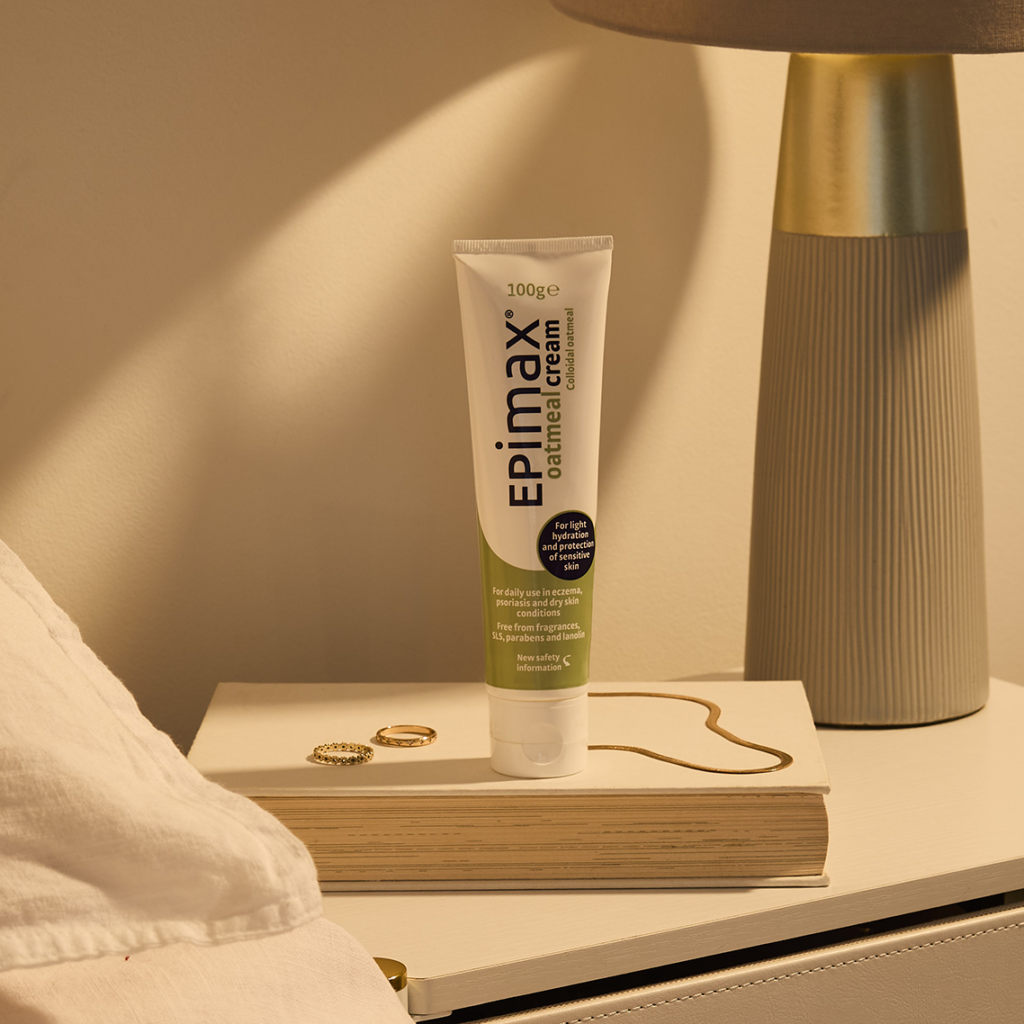
We hope these tips help you to have more comfortable night’s sleep!
Always read the label.
Precautions: Fire hazard. Do not smoke or go near naked flames; clothing & bedding with this product dried on them can catch fire easily.
- https://www.healthline.com/health/itchy-skin-at-night (Accessed March 2025)
- https://www.psoriasis-association.org.uk/news/psoriasis-and-sleep-question-answer (Accessed March 2025)
- https://pubmed.ncbi.nlm.nih.gov/21056174/ (Accessed March 2025)
- 165-Exchange-Bedding-article.pdf (Accessed March 2025)
- https://eczema.org/information-and-advice/living-with-eczema/sleep-and-eczema/ (Accessed March 2025)
- https://www.webmd.com/skin-problems-and-treatments/eczema/eczema-sleep-tips (Accessed March 2025)
EPI1010451CCC1_MAR2025
Be Christmas Ready with EPIMAX®
Christmas season is upon us, so we’ve created this comprehensive guide to help you enjoy the festivities whilst also protecting your skin!
Whether you’re decorating your home, heading to a Christmas Party, braving an outdoor event, or packing for a festive getaway, this blog is full of tips for you.
Making Christmas magic at home:
Whilst natural Christmas trees are lovely, they can pose challenges for people with eczema as they release pollen, which is an airborne allergen and the oil (terpene) found in sap can cause contact allergies when touched.1 As an alternative, consider using an artificial tree in your home, which can be reused each year. Before putting it up in your living area, make sure to remove any dust that may have gathered over the year, as dust buildup can also cause skin flare-ups. Additionally, when choosing Christmas decorations, look for ones can easily be damp dusted to help remove this trigger.2
Although it is tempting to fill your home with seasonal scents, the synthetic chemicals in scented products (such as candles, air fresheners and room sprays) can cause irritation and trigger eczema flares.3
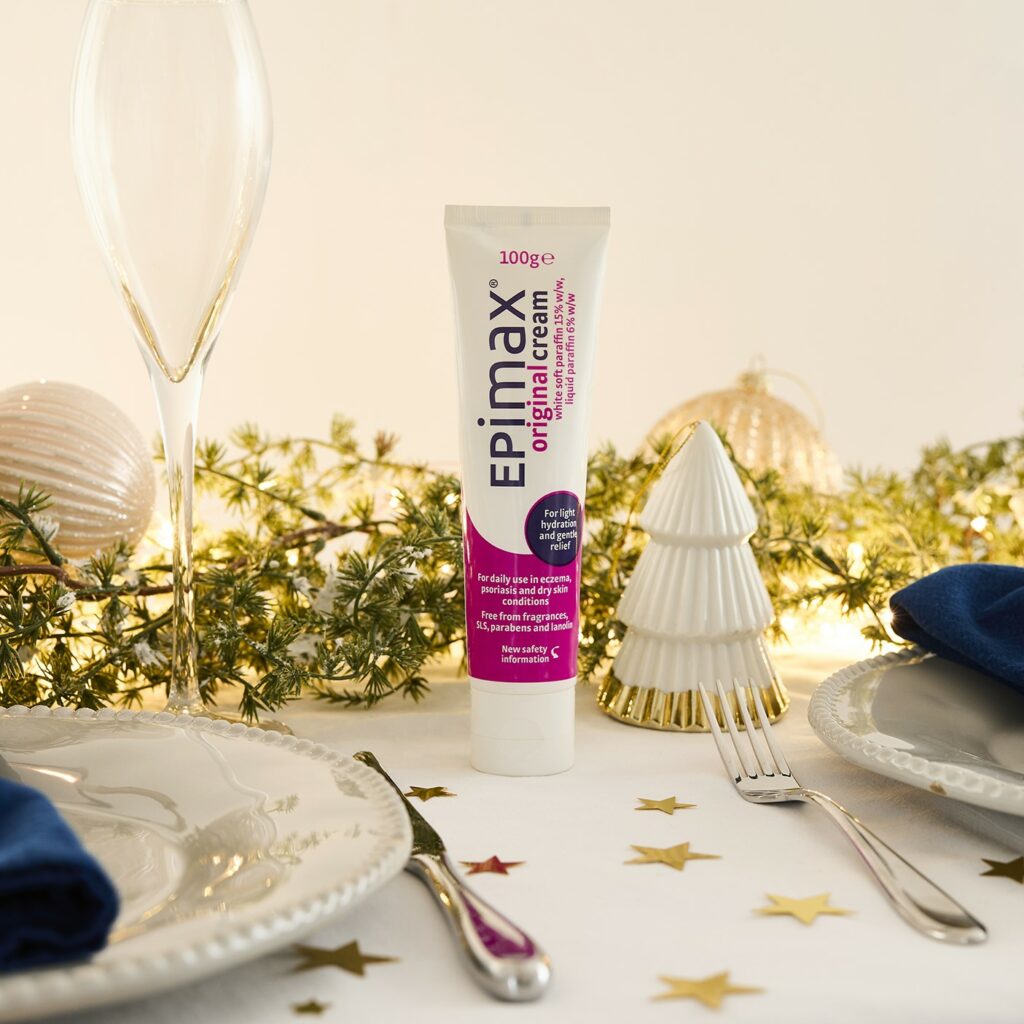
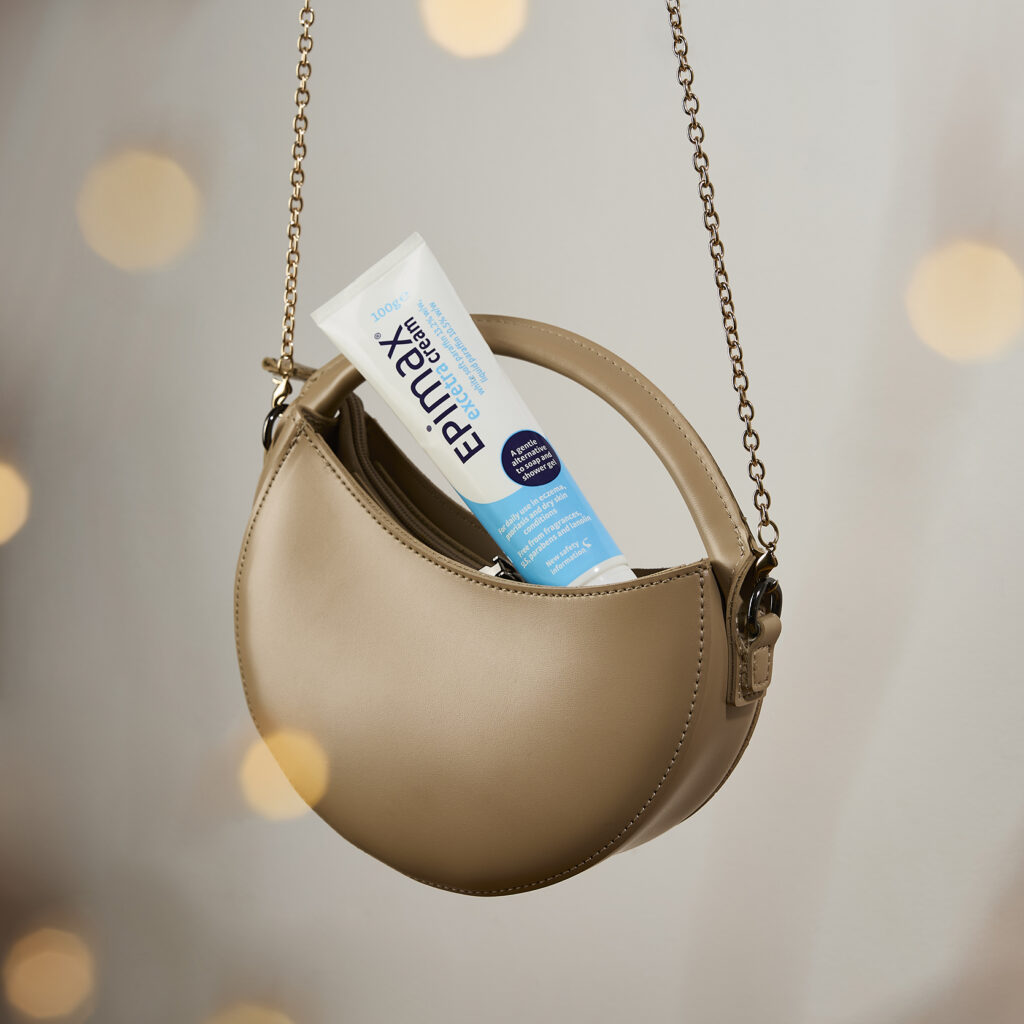
Christmas Parties:
Let’s start with the big question…what to wear?
We know it’s common for people to be encouraged to wear Christmas jumpers to events at this time of year. Often made of synthetic materials like polyester and viscose, they can cause overheating, sweating, and itchiness for people with eczema, psoriasis or dry skin.4 Feeling itchy and uncomfortable at events can really ruin the Christmas spirit, so if you are planning on wearing one, we suggest wearing a cotton base layer underneath to help protect your skin.5
Additionally, party outfits with scratchy sequins and glitter on them can be really irritating to the skin. Why not look for outfits made of softer materials, such as silk, cotton, or bamboo instead which can look equally as glamourous. The temperature at events can also be unpredictable, so wearing multiple layers is a good idea to avoid overheating.
When getting your bag together, remember to take an emollient so you can easily reapply it as needed throughout the event. Our 100g EPIMAX® tubes are conveniently sized to fit in your bag, without taking up the space needed for other essentials.
Outdoors Events:
If you’re heading out to a Christmas Markets, or you are even lucky enough to experience snow, the cold weather can be triggering to dry skin conditions.6
Many people with eczema find that wool and synthetic materials (often in winter hats, scarfs, and gloves) can cause overheating, sweating and irritation. Instead, we suggest you look for soft, seam-free fabric alternatives: natural fabrics such as cotton or bamboo may be more skin-friendly.6
No matter how much you wrap up warm, your eyelids remain exposed to the elements, leaving them vulnerable to drying out from the cold and wind. After being outside, applying EPIMAX® Eyelid Ointment to your eyelids is a great way to soothe, hydrate and comfort dry skin around the delicate eye area.
For more tips on braving the cold and managing your skin, read our Dry skin in Winter – Epimax blog.


Christmas Trips:
We know the festive season can bring a lot of travelling opportunities with it! Don’t get caught up in the Christmas flurry and forget to pack your EPIMAX® emollients. If you are travelling for a longer period, why not take a 500g EPIMAX® tottle or tub with you in your luggage!
We suggest you try to stick to your usual skincare routine as much as you can when in a different environment, to help prevent flare ups.
If you are sensitive to different washing powders/detergents, taking your own bedding when you go away can help to make you feel more comfortable. If possible, adjusting the room temperature and damp dusting will also help reduce additional skin triggers.
The EPIMAX® team wishes you a Merry Christmas!
We hope these tips will help you to enjoy the festive season.1. Watch out for these holiday hazards | National Eczema Association (Accessed November 2024)
2. The 12 Eczema Tips for Christmas | National Eczema Society (Accessed November 2024)
3. Avoid a Christmas Eczema Flare – Tips from the experts! (Accessed November 2024)
4. Eczema – Friendly Clothing | National Eczema Society (Accessed November 2024)
5. Looking after your skin at Christmas – Eczema Outreach Support (Accessed November 2024)
6. Weather and Eczema | National Eczema Society (Accessed November 2024)
EPI1010451BBB1_NOV2024
Back to School with EPIMAX®
We understand that for children living with skin conditions such as eczema, psoriasis and dry skin, the school environment can often trigger or worsen their symptoms.1 The sudden change back-to-school brings for daily activity can also mean a modified skincare routine is needed to maintain skin health.
We are here to support you and your family with the transition!
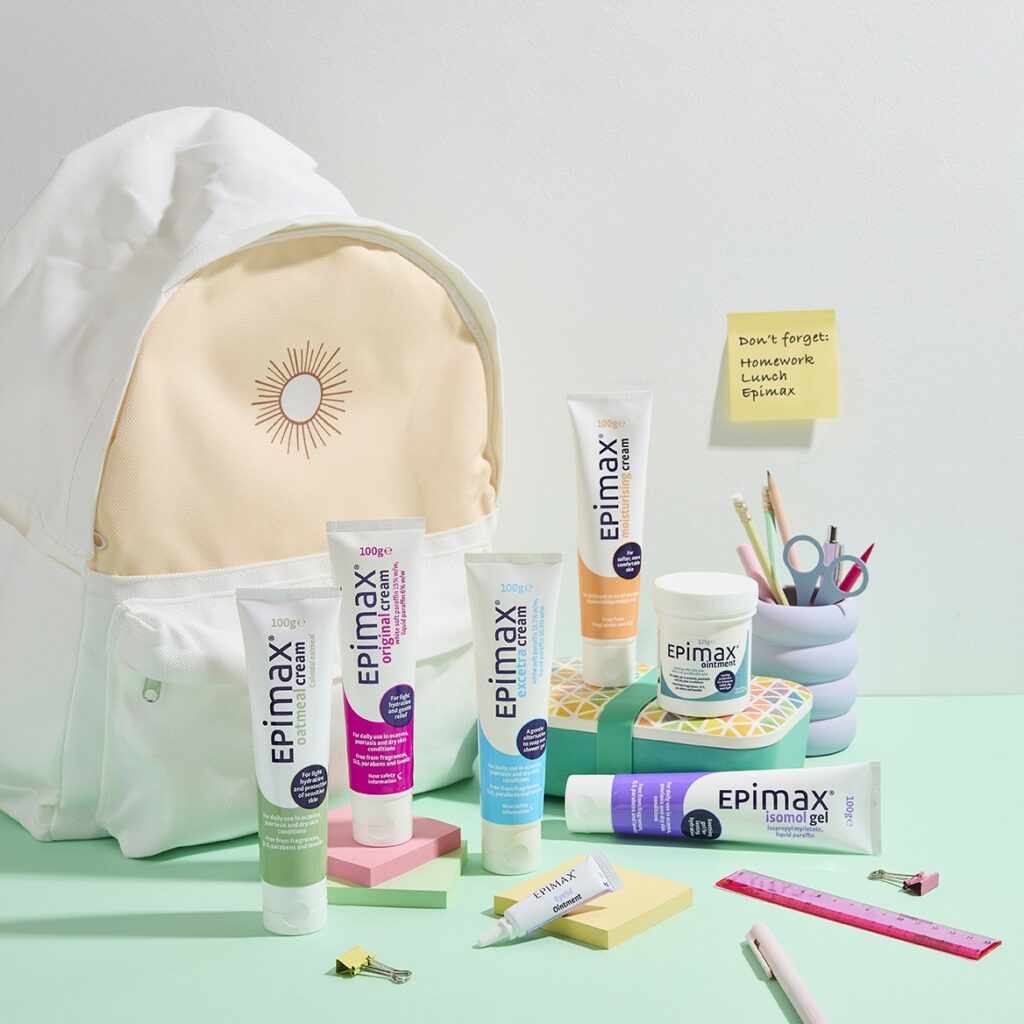
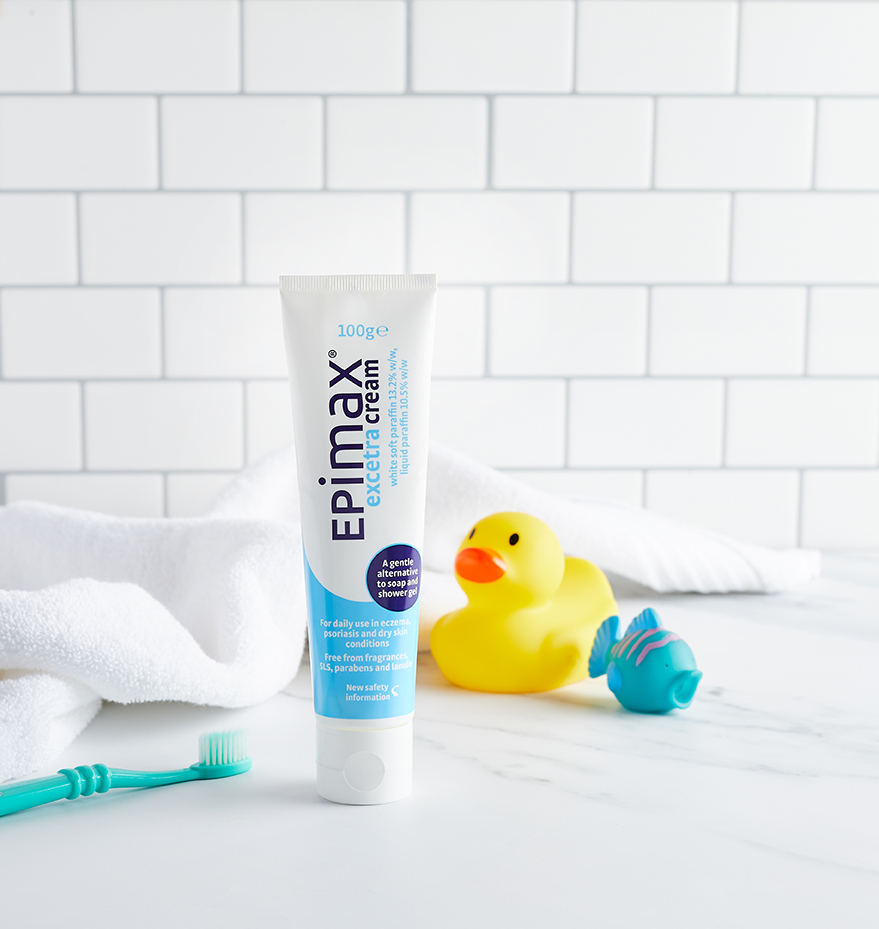
Firstly, we know that school mornings are already very busy for families, however applying emollients in the morning is a great way to protect and prepare your child’s skin for the day. If the forecast is predicting September sun, make sure wait 30 minutes before then applying sunscreen.2
Discussing your child’s health needs with their school and teachers can be helpful for improving their school experience and confidence. If your child is young, members of staff may be able to help remind them to apply emollients throughout the day and encourage them to pat or tap the skin instead of itch, during a flare up.
Try some more of our top tips below to help your child manage their eczema symptoms throughout the school day:
- Classroom environments can often feel hot and stuffy, so why not try requesting that your child’s seat is moved near a classroom window or door to prevent overheating and itching. The airflow should make this area cooler.1
- If you can, opt for 100% cotton school uniform rather than synthetic fibres and wool, which can be irritating to skin. This should be more comfortable and cooler for your child.1
- Using an emollient instead of school soap to wash hands can help prevent skin from drying out.3 Even better if your child remembers to moisturise with an emollient after washing them.1
- Encourage your child to keep their favourite emollient with them during the school day and frequently reapply. Our 100g EPIMAX® tubes are conveniently sized to fit in a school or book bag for easy access! Alternatively, larger containers can be stored in school lockers or drawers making them easy to reach and convenient during the day.
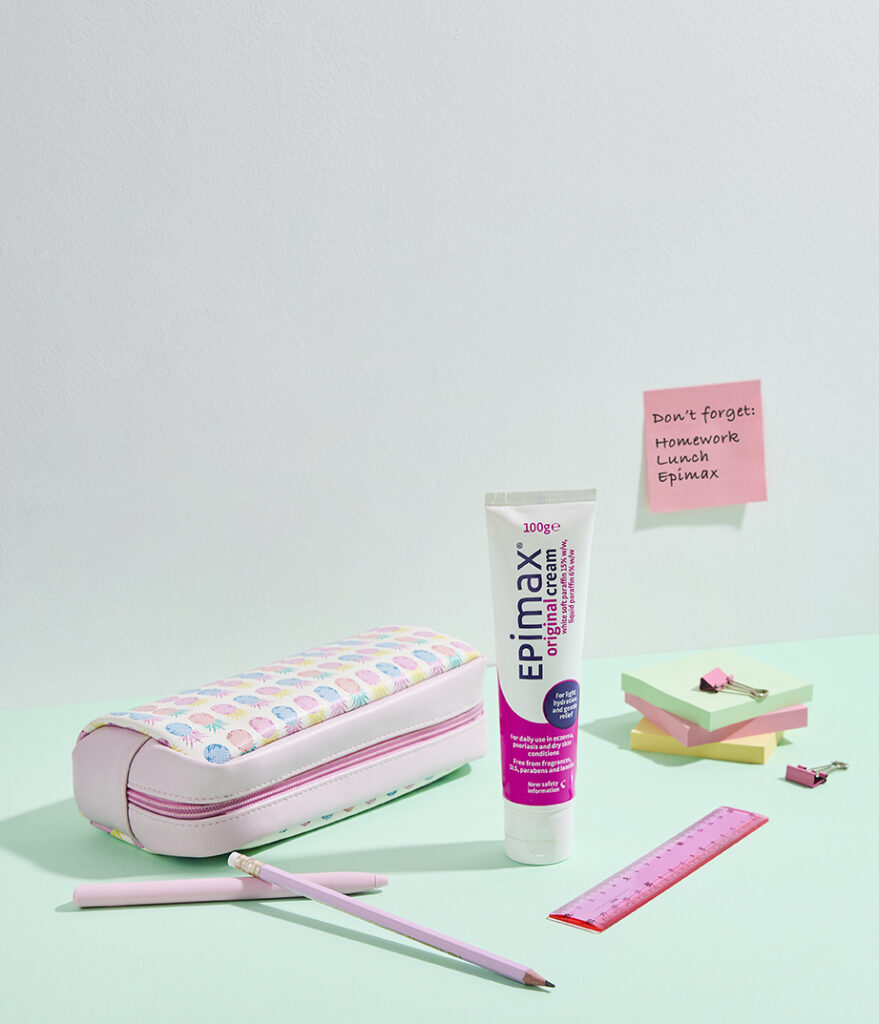
For more support, we recommend you read The National Eczema Society’s useful guide on how to help manage your child’s eczema at school:
School Information Pack | National Eczema Society
- School Information Pack | National Eczema Society (Accessed September 2024)
- Sun and Eczema | National Eczema Society (Accessed September 2024)
- Emollients – NHS (www.nhs.uk) (Accessed September 2024)
EPI1010451AAA1_SEP2024
